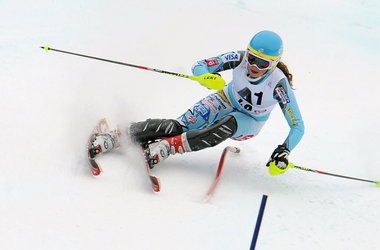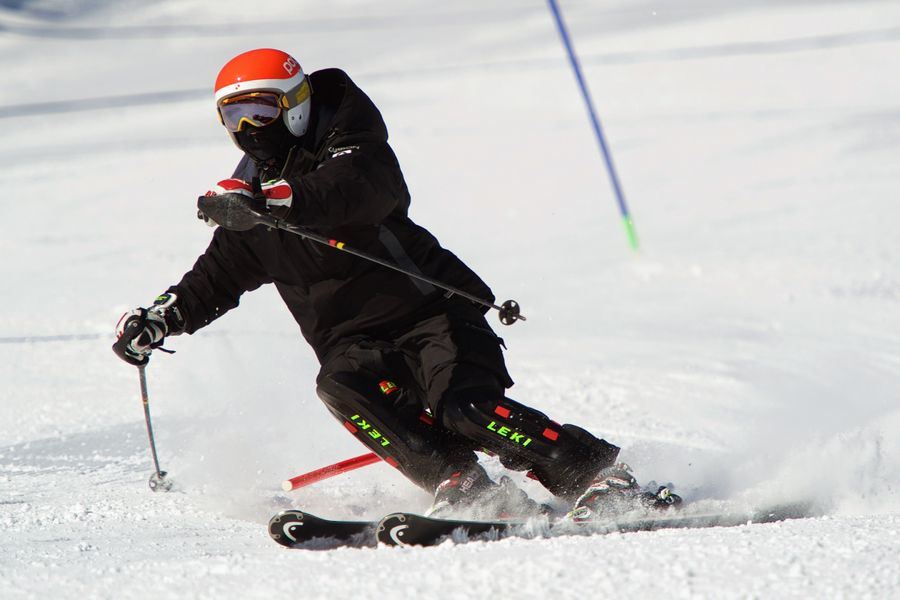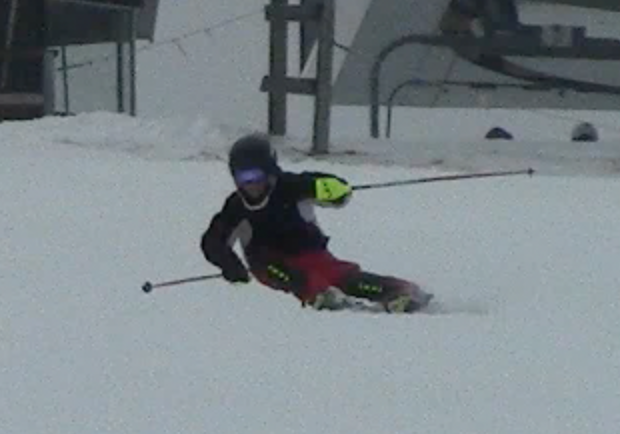Pressure
Pub
Share
Applying pressure to the skis is what causes them to bend and turn and is responsible for great skiing. Avoiding pressure for the most part, on the other hand is one trait of expert skiing.
If you apply correct edge angles and pressure to a ski, the ski itself will provide most of the required turning forces.How the Racers Ski, Warren Witherell, 1972
In most ski turns, pressure increases towards the apex and decreases towards the transition and it is created via a combination of one or more of the following factors:
- gravity, which pulls the body down the hill
- ski edge angle: higher angles usually result in more edge engagement and higher reaction forces
- carving or not influences how much pressure the ski will support
- snow condition (hard snow vs soft snow)
- line and direction: when the skis turn across the direction of travel and the body presses against the skis, centripetal forces are developped
- body alignment++, the stacking of body segments over the outside ski, which allows more pressure to be applied at higher speed turns
- muscles, which can relax and reduce pressure
- boots, which are stiff laterally and longitudinally and allow leveraging parts of the ski
- fore-aft position of the body, which directs more "weight" forward or aft on the ski
The simplest way to apply pressure to a ski is to simply stand on it, but pressure is not a movement, although you do need to use the muscles to either resist the forces that can create pressure or stabilize the joints that allow the skeleton to resist the forces.
Pressure is the result of certain movements, of developing forces on the ski and an internal cue of sensing when and how these forces are applied (strong/light, fore/aft etc).
Pressure can be observed as well, in the form of ski bending or the snow being sprayed by the ski (either while skidding or carving and displacing snow).
Natural pressure distribution
While standing centred on a cambered ski - the camber will distribute pressure along the ski, that is its function.
Some of the factors that can influence this distribution are:
- the stiffness of the ski
- the flex pattern++ of the ski (softer tips, softer tails)
- shape of the ski (wider tails etc)
- fore-aft position of the skier
- binding mounting point
- applying leverage on the boots
When and where
Skis need more pressure on the tips at the beginning of the turn, to start a carve (modern sidecut skis don't require excessive pressure on the tips - they are designed for a more centred stance).
Then, later in the turn, pressure in the middle of the ski as the pressure itself increases, in the Sweet spot is great for a good flex response from the particular ski.
Finally, at the end of the turn, many skis provide acceleration from the stiff tails, so some aft pressure develops - mitigated in part by the floating of an unweighted skis through transition, common in high performance turns.
You can see how pressure gets developed as the skis turn across the direction of the body (look at the boot flexing and snow spray:
In this photo, notice the torsional bend of the skis as well:
Creating pressure
While many focus on pressure management, we see pressure as just one artifact, something between the movements that a skier makes, the input and the outcomes (carving, turning, skidding, oversteering etc).
The "canonical" mechanisms for creating and regulating pressure are flexing and extending of the legs, but that's a very simplistic view - see the list of factors involved in pressure control at the beginning of this page. Also, many have an approach that involves "creating pressure" i.e. pushing into the skis actively, in a variety of situations.
As mentioned above, at the expert levels, skiers struggle to avoid pressure and never strive to artificially create it by pushing into the ski.
To see more on this topic, you need a membership. (Basic)
How much
This really depends on many factors. A green slope relaxed skier only uses the weight.
At higher performance levels, things get (much) more dynamic, although contrary to popular opinion perhaps, high-performance skiing is more about avoiding pressure than creating it.
Also, a carving ski can support more pressure than a skidding ski and hard snow can support more than soft snow etc.
Pressure and speed control
Pressure is an important part of speed control, as you have to resist the forces that are accelerating you, in order to control the speed. You can do this down the hill, while opposing gravity directly, in a hockey stop or more lateral, in higher performance skiing.
You can also look at the pressure distribution in a turn: more at the top, apex or the bottom - high-performance skiers and racers tend to get more speed control around the apex rather than at the bottom of the turn.
Read:
Sessions:
You need to log in to post a comment!


